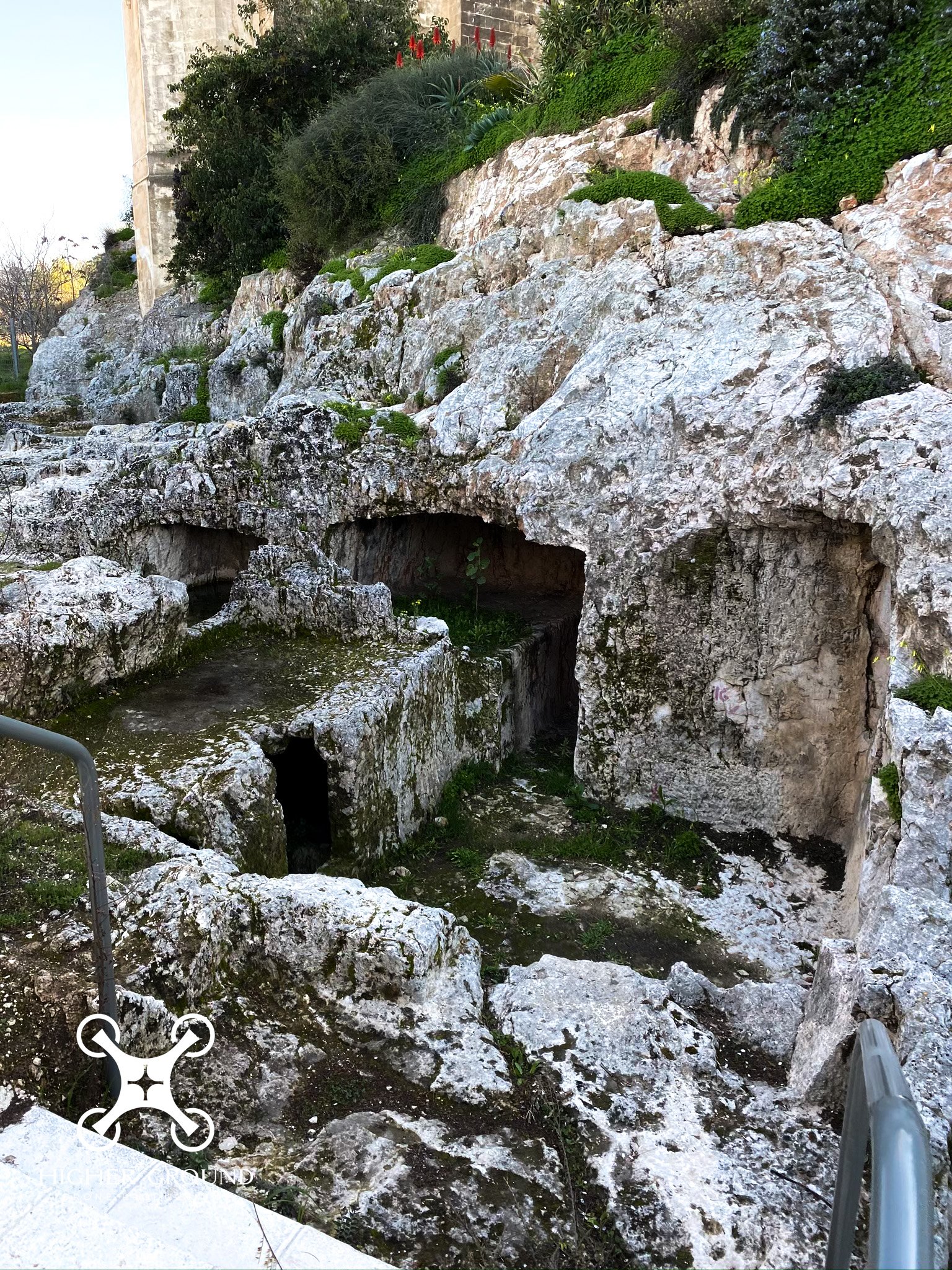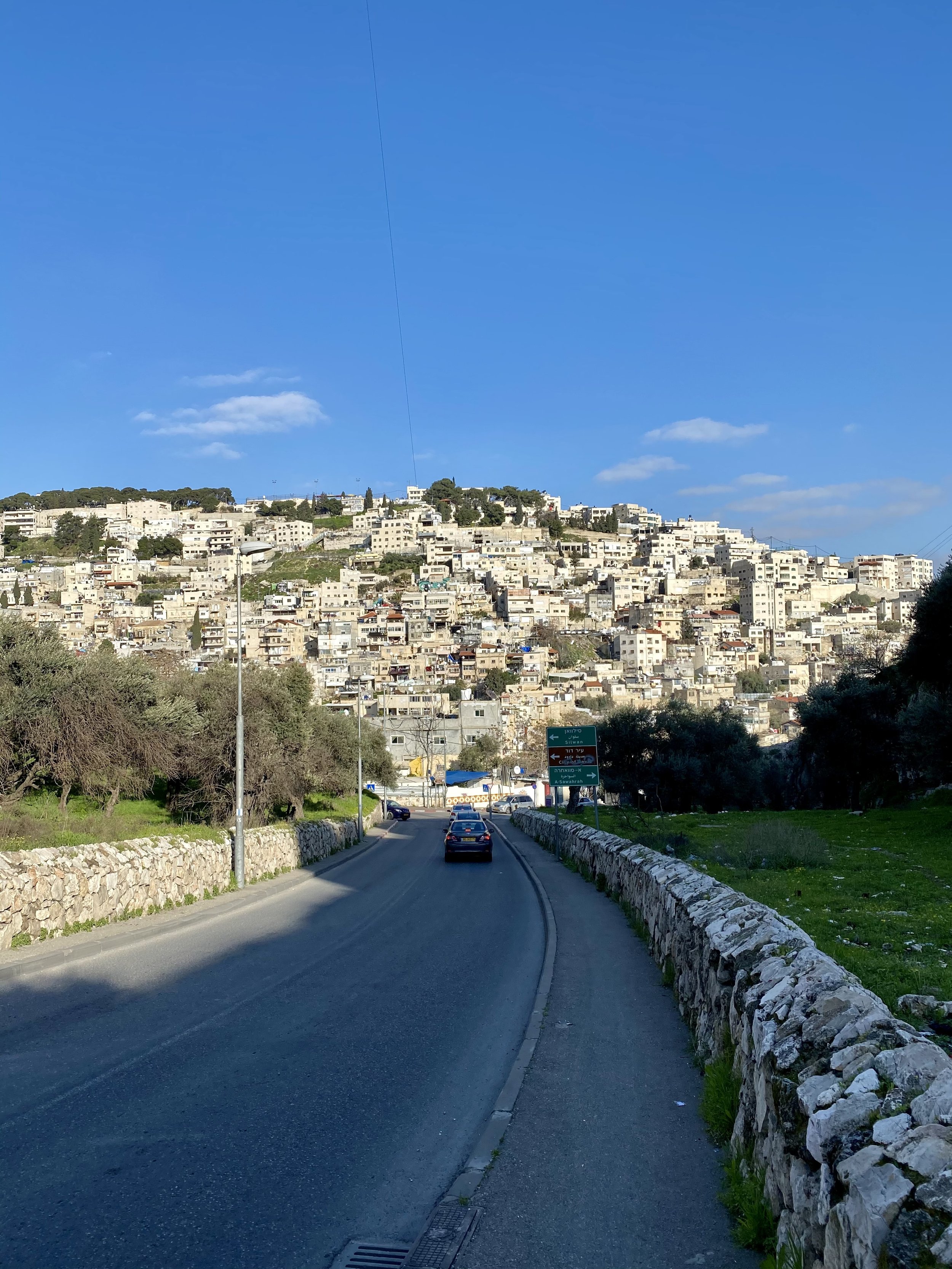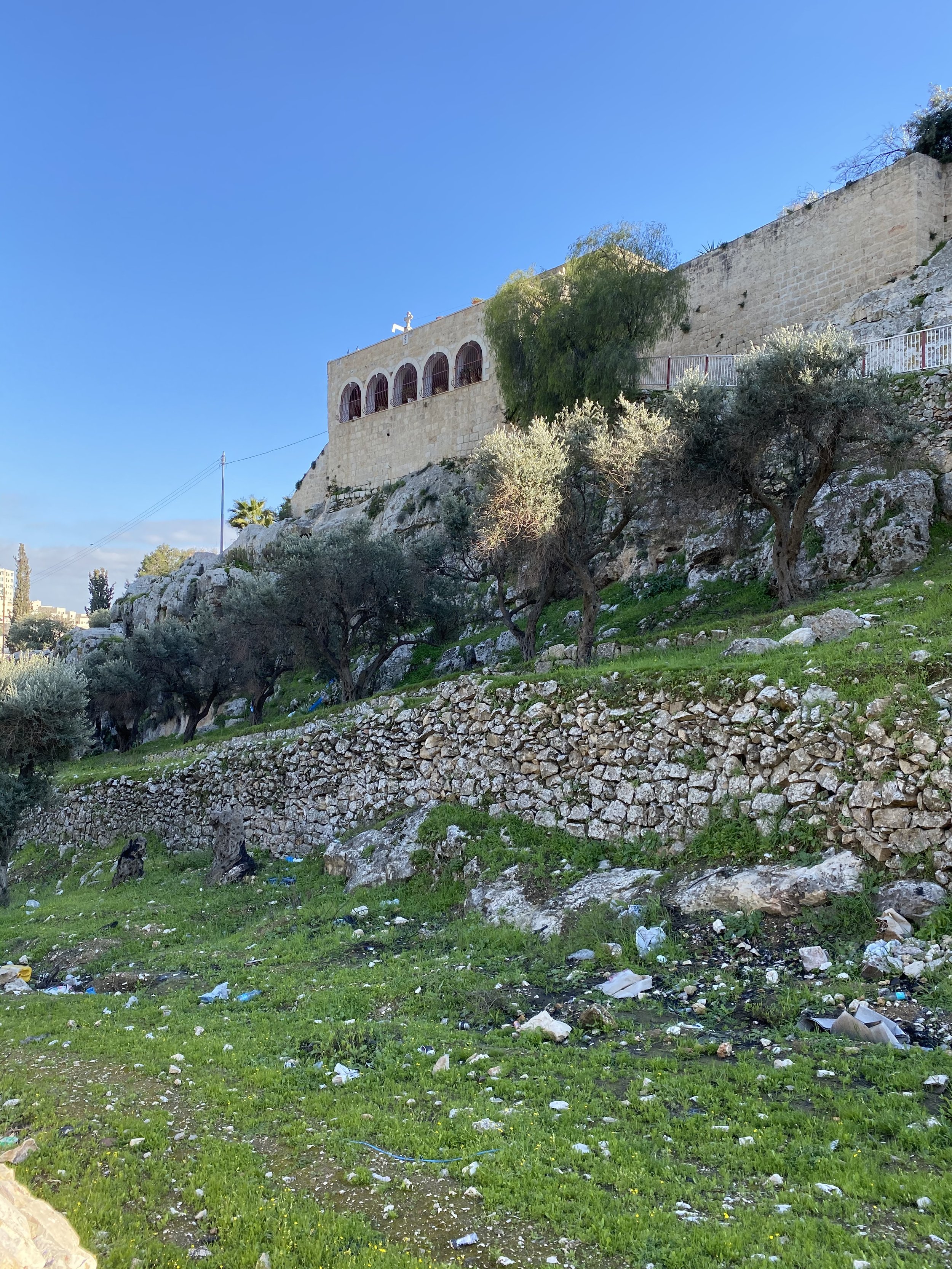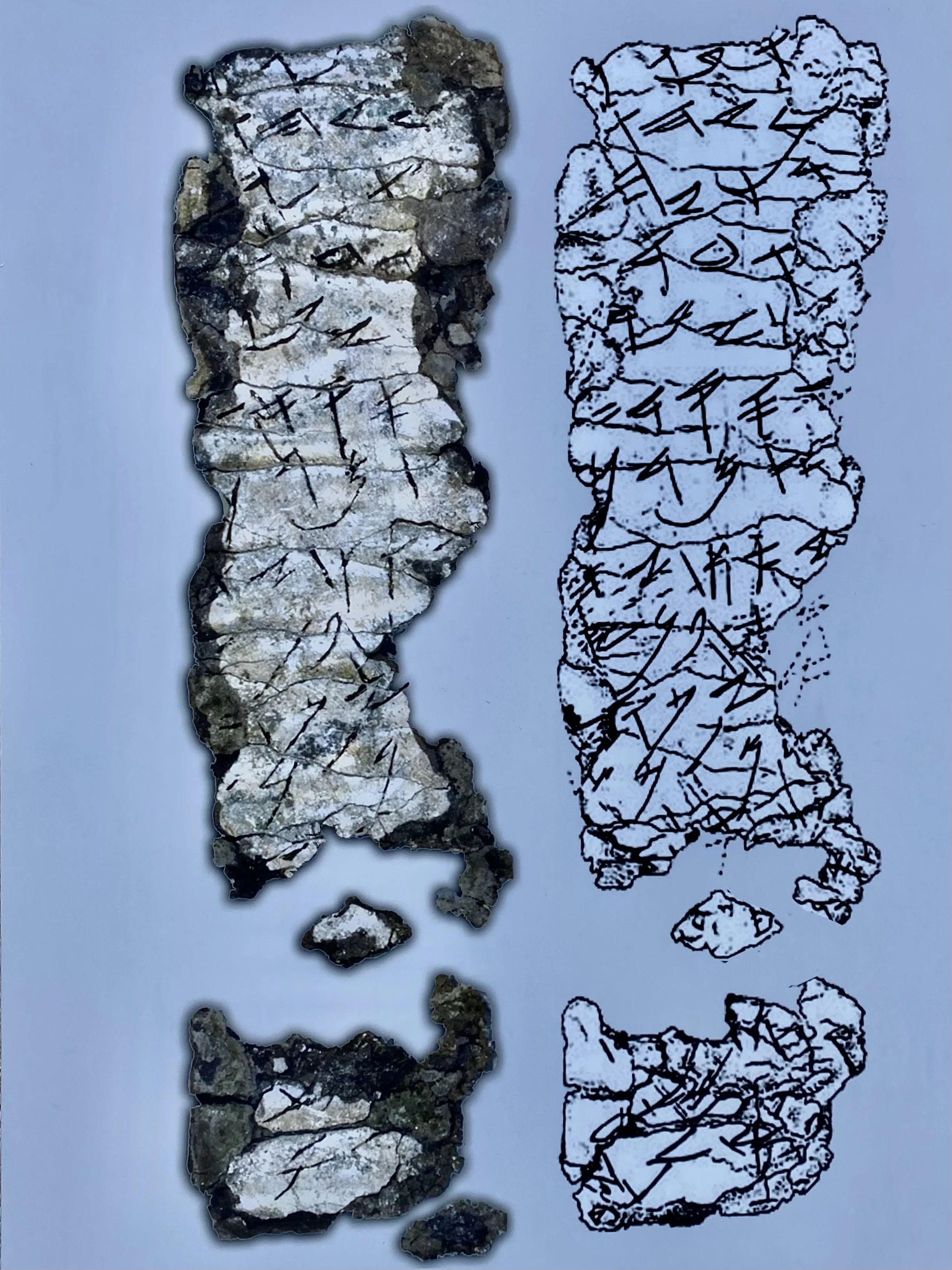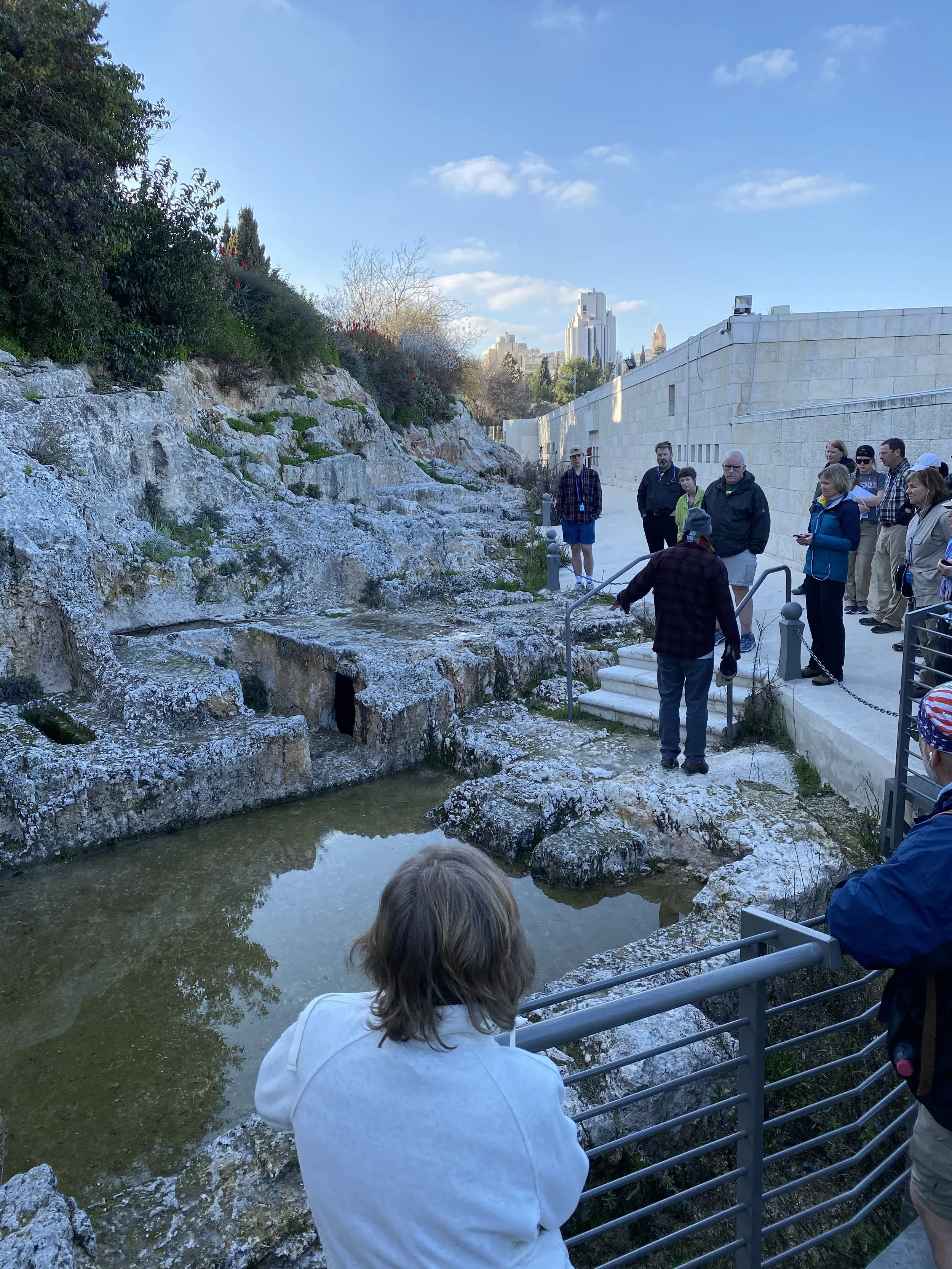Ketef Hinnom, Israel
“The Lord bless you and keep you; the Lord make his face to shine upon you and be gracious to you; the Lord lift up his countenance upon you and give you peace” Number 6:24-26
Ketef Hinnom, which means “the shoulder of Hinnom” is located just outside of old city of Jerusalem, southwest of the Temple Mount, on the southern ridge of the Hinnom Valley. This hill is elevated above the Hinnom Valley and gives a beautiful view down to the Silwan village and the Mount of Olives. On the crest of the hill today sits St Andrew’s Scottish Church and Hospice. This area has yielded evidence of occupation for many thousands of years. There is evidence of Roman encampment from both the 1st century BC and 1st century AD. The area was once covered in trees and still has ancient olive trees. There was a rock quarry here from which were taken stones to build a Byzantine church in the 5th - 6th century AD, the remains of which can still be seen. Of greatest interest are the burial caves dating from the 7th - 6th centuries BC.
These rock cut burial caves were all impacted and damaged by the quarry activity. The ceilings have fallen in or were quarried and so of course the entrances are gone. Still visible are the burial benches with body shaped cut outs and repositories underneath for grave goods and for bones to make way for the next generation. This was a burial area for the elite of Jerusalem during the 1st temple period. Cave 24 is one of the more complex burial caves with 5 burial chambers around a large room and numerous repositories. Due to the ceiling caving in at some point, the repositories were protected from treasure hunters and grave robbers.
In the late 1970’s, Gabriel Barkay’s excavation team discovered the untouched repository in cave 24. The findings are extraordinary: jewelry, silver and gold decorative objects, beads, signet rings, pottery and other material remnants of a wealthy family. But most spectacular of all the finds are 2 silver scroll amulets. They had a hole through the middle of the small rolls of fine thin silver - probably for a string or to be placed on a necklace. When the experts at the Israel museum finished the painstaking process of unrolling them they were found to have writing in ancient Hebrew script. In part, the scrolls contain the priestly blessing as we know it from Numbers 6:24 -26. This is the earliest written bible verse in existence (so far!). Older than most of the Dead Sea scrolls by 400 years. A 2009 article in Biblical Archeology Review listed 3 solid grounds for the dating of the scrolls: paleographic (the writing / shape / form is from the late 7th century BC), stratigraphic (the amulets were found in this protected repository at its lowest level) and based on the pottery of the same level. Solid support for a much earlier writing of the priestly code than most acknowledged prior to this discovery.
Ketef Hinnom, 1st temple period rock cut graves

